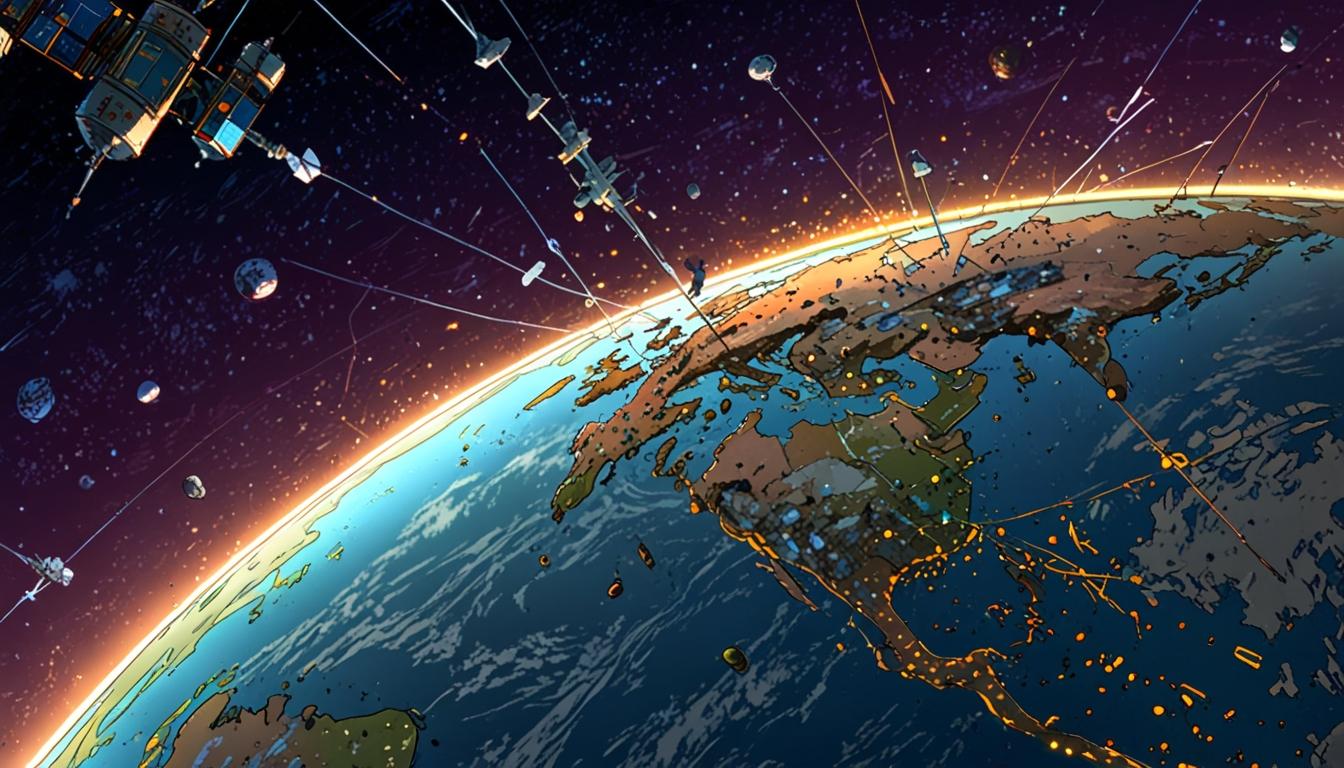The Race for Space: Striving for Connectivity Amid Growing Cosmic Chaos
The cosmos surrounding Earth has become increasingly congested, raising alarms among scientists and industry experts alike as technology firms vie for dominance in the realm of satellite internet. Currently, thousands of satellites orbit our planet, many of which operate in large groups, commonly referred to as constellations, geared towards providing enhanced communication and internet services. Among these, SpaceX's Starlink stands as the largest player with over 7,000 satellites operational since its inception in 2019.
In a recent move to stake its claim in this competitive landscape, Amazon launched the initial 27 satellites for its Kuiper broadband internet constellation. This ambitious initiative seeks to establish a comprehensive network of 3,236 satellites capable of delivering global internet coverage. To remain compliant with U.S. regulatory requirements, Amazon faces a hurdle: it must deploy half of this planned constellation by mid-2026. While the company initially projected a 2024 launch date, delays have necessitated recalibration, but industry analysts remain optimistic about its long-term potential, noting Amazon's established infrastructure and partnerships for further launches.
As these companies race to expand their services, the spectre of Kessler Syndrome looms large; this term describes a catastrophic scenario in which the density of satellites and debris in low-Earth orbit becomes so high that collisions trigger a chain reaction of further collisions. Dr. John Crassidis, a professor from the University of Buffalo, warns that without significant intervention, the risk of this ‘cascade effect’ becoming a reality is alarming. This impending crisis calls into question not just the future of satellite technology, but also our broader ambitions in space exploration.
Concerns regarding orbital congestion are not new. Hugh Lewis, a professor at the University of Southampton and a former delegate to the UK Space Agency, stated that the issue has been on the radar for decades. The existing regulatory framework, he argued, struggles to keep pace with the rapid expansion of satellite deployments. The regulations intended to guide satellite altitudes and operational limits are often interpreted variably by different nations, leading to an uneven playing field in the arena of space governance.
Compounding the problem is the growing inventory of space debris. According to a European Space Agency report, as of early 2025, more than 1.2 million debris fragments larger than one centimetre are currently orbiting the Earth, with around 50,000 exceeding ten centimetres. These debris pieces pose significant risks to both active satellites and human life aboard the International Space Station (ISS), which frequently conducts manoeuvres to avoid potential collisions. The concern extends beyond large debris; even small fragments present substantial threats, emphasising the urgent need for active debris management strategies.
In response to these challenges, SpaceX has begun efforts to decommission older satellites. However, the implications of such actions on Earth’s atmosphere remain poorly understood, as debates around the environmental impact of re-entering satellites continue. Additionally, while regulations exist theoretically, as Dr. Jonathan McDowell from the Harvard-Smithsonian Center for Astrophysics pointed out, their practical application is somewhat vague, undermining efforts to maintain orbital safety.
The urgent call for international treaties is echoed by the experts, who argue that collaborative frameworks are essential to mitigate the rapid growth of satellite constellations and resultant debris. As Dr. Crassidis articulated, “We need to get some treaties in place to slow down the growth” of satellite deployments, which he asserts is crucial for safeguarding the future utility of low-Earth orbit.
The potential repercussions of uncontrolled satellite proliferation extend to the scientific community as well. With SpaceX accommodating astronomers' concerns over the brightness of its satellites, it highlights the broader impact of commercial ventures on astronomical observations. As NASA embarks on ambitious missions to the Moon and Mars, navigating through a landscape of growing satellite activity and debris presents additional hurdles for its research agendas.
As the competitive dynamics of the satellite internet market evolve, it becomes increasingly clear that the intertwined fates of technological innovation and orbital sustainability demand a collaborative approach. With corporations racing against time, it remains to be seen whether they can reconcile their ambitions with the imperative to protect the shared domain of space.
Reference Map:
- Paragraph 1 – [1], [6]
- Paragraph 2 – [1], [5]
- Paragraph 3 – [1], [7]
- Paragraph 4 – [4], [2]
- Paragraph 5 – [4], [5]
- Paragraph 6 – [4], [3]
- Paragraph 7 – [1], [2]
- Paragraph 8 – [1], [4]
Source: Noah Wire Services
